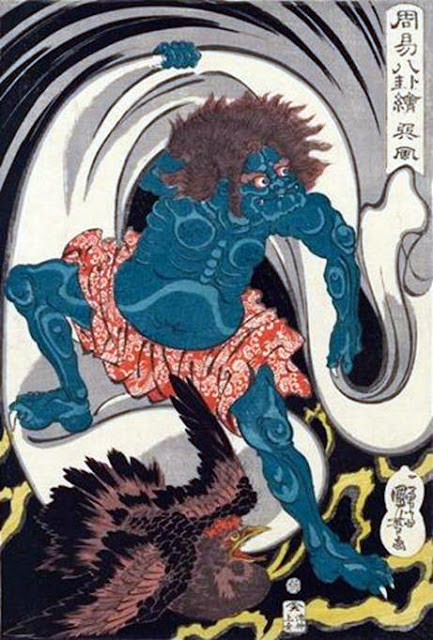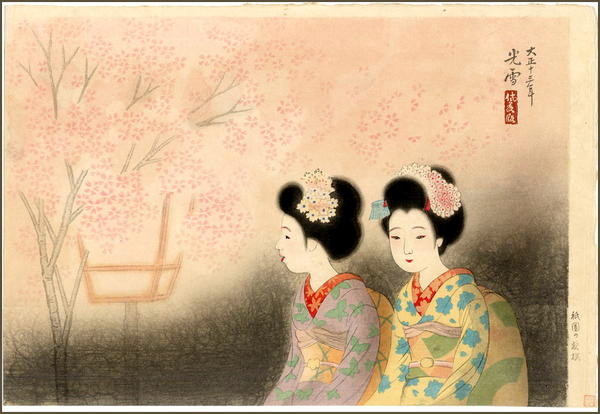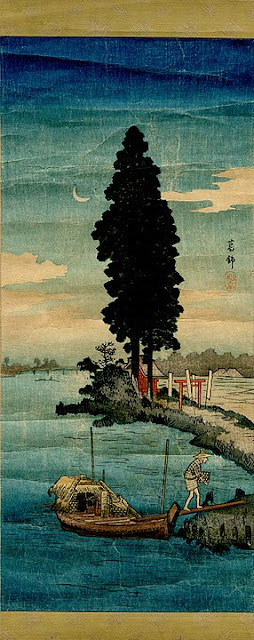 |
| Kuniyoshi: Fûten, the wind god. |
This is Fûten (巽風), the wind god, manipulating his swirling bag accompanied by a storm-bird; a print by Utagawa Kuniyoshi. The print is from 1837 or 1838, and is part of a series of illustrations to a book, "Shûeki hakke e" 周易八卦絵, Universal Divination by the Eight Trigrams. Only two prints from this series are known; it is unclear if Kuniyoshi ever completed it.
The eight trigrams are symbols of Chinese origin. They can be combined into 64 different hexagrams and are used for divination. It is extensively described in the ancient Chinese book "I Ching".
According to legend, the trigrams were found on the back of a tortoise - a discovery attributed to Chinese emperor Fu Hsi, in the 24th century BC.





